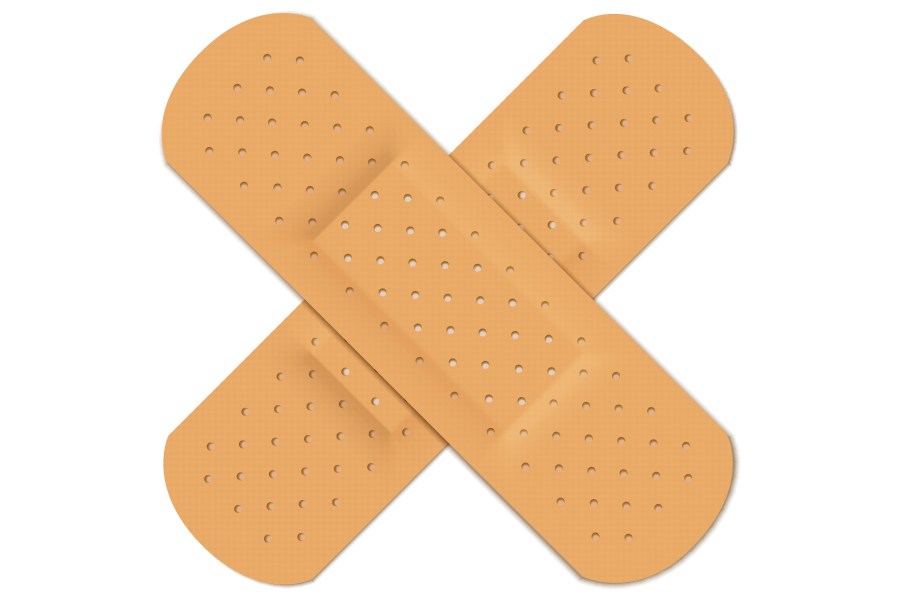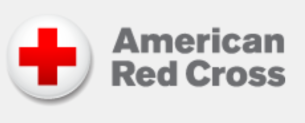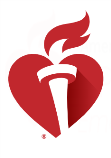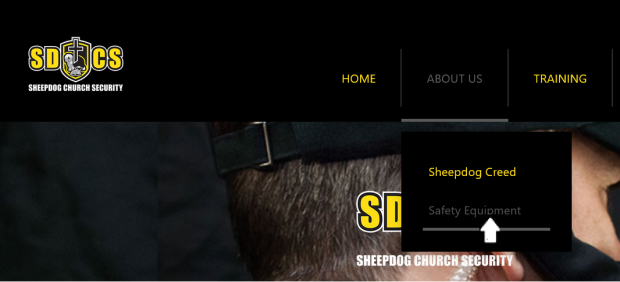Medical Response Readiness

This article is related to the Safety Member Certification training module “Mass Trauma Emergencies.”[1]
From the Bible
Luke, the beloved physician, and Demas, greet you (Colossians 4:14).
And went to him, and bound up his wounds, pouring in oil and wine, and set him on his own beast, and brought him to an inn, and took care of him (Luke 10:34).
He healeth the broken in heart, and bindeth up their wounds (Psalm 147:3).
And Isaiah said, "Take a lump of figs." And they took and laid it on the boil, and he recovered (2 Kings 20:7).
Introduction: “Is there a doctor in the house?”
A well-worn line from movies and stories says, "Is there a doctor in the house?" Some sources suggest that this may have originated in theaters when someone fell or had a medical incident. A member of the staff or cast would come onto the stage and ask for a doctor to treat the injured or ill person. Hopefully, someone would be there who could respond to this call-out.[2]
A church is not exempt from the need for medical help. Just change "doctor" in the call-out to "medical professional." I remember the time in my home church when a choir member tripped and fell while stepping off the riser. A member of the church who was in the Seattle Fire Department responded. He had the curtain pulled while he treated the choir member. An ambulance was called. She had a broken leg.
You may have physicians, nurses, EMTs, or other medical professionals in the church when the need arises, but maybe not at that one moment. The answer at that time would be someone in the church trained to handle a medical emergency. Therefore, it is important for Church Safety Team members, ushers and greeters, teachers, youth leaders, staff, and others to be trained for medical response.
In the News
Regina, Saskatchewan, December 23, 2015 - A minister at St. James United Church in Regina and an assistant were preparing the sanctuary for the Christmas Eve service. The minister began feeling dizzy and asked to be helped into the office where she could sit down at her desk. A minute later she passed out. Her lips were blue. The assistant called 911. After the dispatcher asked if they had an AED (Automated External Defibrillator), she ran to get it. It was newly-installed. She used it and did CPR (Cardiopulmonary Resuscitation) while the dispatcher coached her. The medics arrived in 8 minutes. The minister survived and recovered.[3]
Gladwin, Michigan, February 2023 - A 17-year-old teen went to the church's gym for sport activities. He collapsed during a relay race. While others called 911, the pastor started CPR. He remembered taking CPR training at the church years before. Medics coached him over the phone. He kept it up until the paramedics got there. The teen was unconscious and had no pulse. Paramedics put him on an oxygenation machine while taking him to ER. Over a few months the teen recovered and returned home. He had suffered a juvenile heart attack.
After this incident, the church staff has been taking CPR training, gaining and renewing certifications.[4]
Cleveland, Ohio, July 9, 2023 - Police officers responding to reports of shots fired in Cleveland's warehouse district rushed toward the sounds of gunfire. While the shooters scattered, officers treated the wounded. Lives were saved by using tourniquets. One officer who did not have one used his belt. The police department told an investigating TV station it was looking into why some of the patrol cars did not have the required Individual First Aid Kits.[5]
Marietta, Ohio, January 20, 2020 - A church in Marietta, Ohio, hosted a Stop the Bleed training session. This was the first time the team from West Virginia University had presented the training in a Washington County, Ohio, church. It had previously presented it at schools in the county.[6]
New York City, updated December 5, 2023 - Verywell Health (an online magazine by the publishers of Better Homes and Gardens) has an article on treating burns, whether 1st degree, 2nd degree, or 3rd degree. The article does not mention use of this First Aid topic in churches, but burns do happen in church kitchens and at church activities.[7]
Training for Medical Response
I had a Boy Scout First Aid book that Dad had when he was in the Scouts. It covered a lot of situations and how to treat them when in remote places. These included cuts, burns, sprains, fractures, heat exhaustion and stroke, hypothermia, frostbite, lightning strike, etc. It is called "First Aid" because it is what the first person on the scene can do even before taking the injured person to a physician. Several of the procedures in the book have been updated, but a lot are still used.
Now we have procedures and equipment unknown in the early 20th Century, such as the Heimlich Maneuver, Cardiopulmonary Resuscitation (CPR), Automated External Defibrillators (AEDs), and E-Pens.
First Aid, CPR and AED
Every church needs persons on hand who know First Aid. A First Aid kit or wall cabinet is only as useful as our knowledge of how to use its contents. There may be local First Aid classes held by coaches, medical centers, fire departments, and local colleges. Some courses are available online, but some hands-on training and practice is better since the student actually goes through the motions with the instructor coaching.
Cardiopulmonary Resuscitation (CPR) and Automated External Defibrillators (AEDs) are used for circulatory emergencies, such as heart attacks and electric shock. CPR is a procedure to restore heartbeat and breathing to someone who has no pulse and/or is not breathing. It was formerly called "mouth-to-mouth" resuscitation, but breathing into the patient is no longer mandatory, with the responder relying more on chest compressions.
An AED is used to re-stabilize a heart in fibrillation (erratic rapid heartbeat). It times a shock to stop and restart the heart.
The top two national organizations offering First Aid training are the American Red Cross, and the National Safety Council, and they also teach CPR and AED use. The American Heart Association primarily teaches CPR and AED use with allied skills, but does also teach First Aid.
American Red Cross

This organization traces its roots back to the Civil War when volunteers (mostly women) treated the wounded - both civilian and military - and served as nurses in field hospitals. During the two World Wars, it trained soldiers in life-saving skills so they could be first responders for their wounded comrades, the origin of the term "First Aid." This not only saved many lives, but resulted in fewer amputations.
Today, the Red Cross has many functions, including collecting blood and operating blood banks for transfusions. I don't have the figures, but it is possible that most First Aid classes are taught by the Red Cross. They also teach CPR and using an AED. If you are seeking training for yourself, they have a page for finding a class, Red Cross Training for Individuals.
If your church wants to hold First Aid and CPR / AED classes, there is a page for Organizations that offers "On-Site Group Training for Teams and Employees." You'll be more likely to get an instructor when you have more than a handful of people in the class - they want it to be worth their while coming to your church to teach a class. Get as many members of the church as will fit into the room for training. This should include greeters, ushers, teachers, youth leaders, and church staff. The more, the better.[8]
National Safety Council

Like the American Red Cross, the National Safety Council (NSC) offers classes in First Aid, CPR, and AED. They focus on workplaces, helping employers to meet OSHA standards, such as always having someone on the site trained in these skills. NSC courses also include bloodborne and airborne pathogens training and advanced training in First Aid, CPR, and other life-saving skills.
NSC also teaches about workplace safety. A large church with many on staff may want to use NSC to train and certify its staff, the Safety Team, and volunteers.[9]
American Heart Association

On its website, the American Heart Association (AHA) says, “The AHA is the leader in resuscitation science, education, and training, and publisher of the official Guidelines for CPR and ECC.” Their courses are Basic Life Support (BLS), Advanced Cardiovascular Life Support (ACLS), and Pediatric Advanced Life Support (PALS). Besides CPR and AED, these courses also include opening airways, and recognition and emergency treatment of a stroke. AHA also teaches First Aid.[10]
Mass Casualties
Responding to mass casualties is more than First Aid and CPR. It requires coordination and triage. The kinds of injuries may be not only more numerous, but also much worse than those encountered in most accidents. Mass casualties can result from active killers, fires, severe weather, geological disasters (such as earthquakes and tsunamis), and human-caused disasters (explosions, toxic spills/emissions, structural failures, etc.). We will cover two sources of training for mass casualties.
Safety Member Certification
The eighth class (training module) in the Safety Member Certification program is "Mass Trauma Emergencies." It was designed to help Church Safety Team members know how to handle numerous severe injuries in a mass trauma event. Specially covered are active shooters and natural disasters (severe weather and earthquakes). Rapid-fire firearms can produce horrendous wounds, while tornadoes, hurricanes, and earthquakes can cause structural failure with literal crushing and entrapment.[1]
In a mass trauma event, responders need to practice triage [tree-AZH]. This is getting help first to those who need it worst. Injuries such as torso wounds, crushed limbs and torsos, and severe head injuries need special attention and skill. They also need medical supplies not found in most First Aid kits.
Stop The Bleed

Bleeding is the greatest cause of death after injury. There is one organization dedicated to teaching people how to stop severe bleeding before medics arrive. Stop the Bleed teaches both professionals and non-professionals this skill. They are credited with saving lives during the 2018 Tree of Life shooting in Pittsburgh. Police officers, firefighters, medics, and members of churches and synagogues in Pittsburgh had taken the Stop the Bleed training course.[11]
Equipped for Medical Response
The Boy Scout motto is Semper paratus (always prepared). Equipment and supplies are a key part of the preparation for medical response. Two sources recommended here are the SDCS Amazon Store (Church Safety and Security Aids and Equipment Ideas) and Mountain Man Medical.[11][12]
SDCS Amazon Store

To get to the SDCS Amazon Store, click "Safety Equipment" on the pull-down menu under the About tab on Sheepdog Church Security. Then click on the book, and up comes the whole store. Six medical response items are on this page:
- Rapid Care First Aid Cabinet, Wall Mountable
- Philips HeartStart Home AED Defibrillator
- Ergodyne Arsenal 5215 Large Medic First Responder Trauma Duffel Bag
- North American Rescue CAT Combat Application Tourniquet
- Dynarex Emergency Pressure Bandage (Israeli Type)
- Moore Medical Airway Kit - Nasopharyngeal
This page also has other items for church safety & security.[11]
Mountain Man Medical
Mountain Man Medical (M3) is a Sheepdog Church Security affiliate.[12]
Kris worked with M3 in developing two products. The first is an IFAK (individual First Aid kit), the Sheepdog Belt IFAK. This has enough First Aid supplies for at least one injured person, ideal for a first responder.
- Prairie Molle Pouch
- 1 SOF-T tourniquet
- 1 4″ Israeli Bandage
- 1 Pair of Gloves
- 1 Pair of Shears
- 1 CPR Face Shield
This IFAK is recommended for each member of the safety team.
The second product is The Mass Casualty Trauma Kit. M3 liked this, so they adopted it as their mass trauma kit. They say, "The Mass Casualty Kit is designed for small to large organizations and facilities that may be targeted for mass murder type events." The number of trauma kits needed depends on the number of congregants. The kit consists of:
- The Osprey Molle Pouch with First Aid Red Cross Velcro Patch
- 2x TacMed SOF-T Tourniquets
- 2x Dynarex 4″ "Israeli Style" High-Pressure Dressing
- 4x Pairs of Blue Nitrile Gloves
- 1x Compact Trauma Shears
- 2x North American Rescue Hyfin Compact Twin Pack Chest Seals
- 1x Mini Black Permanent Marker
- 1x Dynarex Emergency Rescue Blanket
- 2x Pre-Lubricated Combat Medical NPAs
- 2x ChitoGauze 3″ x 4yd PRO Hemostatic Dressing
- 1x Dynared Krinkle Compressed Gauze 4.5″ x 4.1 yards
- 1x Dynarex Triangle Bandage / Cravat
- 2x CPR Face Shields
It has more of the Sheepdog IFAK items plus several items that are not in the IFAK. Both kits can be resupplied with items on Mountain Man Medical. These products are listed by category:
- Tourniquets
- Hemostatic Gauze
- Chest Seals
- Bandages
- Pouches & Carriers
- NPAs
- Safety Products
- Splints & Immobilization
You can also Shop By Brand.
Some of these are also available on the Sheepdog Church Security Amazon Store.
Conclusion
Medical emergencies with injuries and medical episodes can happen at any time and are more common than shootings or fires. Be trained and equipped, ready to respond.
More on Training
Enrollment is still open for the 2023-2024 season of Online Events (the live Zoom classes training format of Safety Member Certification). "Mass Trauma Emergencies" is the eighth training module with two classes left:
|
Q1 |
Q2 |
Q3 |
Q4 |
Training Module |
|
|
1 |
Sep 10 |
Nov 12 |
Jan 28 |
Mar 24 |
Safety Team Fundamentals |
|
2 |
Sep 17 |
Nov 19 |
Feb 4 |
Apr 7 |
Active Shooter Response |
|
3 |
Sep 24 |
Dec 3 |
Feb 11 |
Apr 14 |
Deescalating Disruptive Persons |
|
4 |
Oct 1 |
Dec 10 |
Feb 18 |
Apr 21 |
Protecting Children from Abuse |
|
5 |
Oct 8 |
Dec 17 |
Feb 25 |
Apr 28 |
Basic Use of Force Laws |
|
6 |
Oct 15 |
Jan 7 |
Mar 3 |
May 5 |
Arson and Fire Safety |
|
7 |
Oct 22 |
Jan 14 |
Mar 10 |
May 19 |
Storms and Disasters |
|
8 |
Nov 5 |
Jan 21 |
Mar 17 |
Jun 2 |
Mass Trauma Emergencies |
References
- Kris Moloney, "Mass Trauma Emergencies," Safety Member Certification, Sheepdog Church Security, © 2020 [https://sheepdog-church-security.thinkific.com/].
- "Is there a doctor in the house?" The Free Dictionary, from Farlex Dictionary of Idioms. © 2022 Farlex, Inc, all rights reserved [https://idioms.thefreedictionary.com/Is+there+a+doctor+in+the+house%3f].
- Whitney Stinson, "Newly installed AED saves pastor's life," Global News, March 19, 2016, Updated May 16, 2023 [https://globalnews.ca/news/2586884/newly-installed-aed-saves-pastors-life/].
- Staff writer, "Stayin' Alive: Pastor Uses CPR to Save Teen's Life," Mary Free Bed Rehabilitation Hospital, June 5, 2023 [https://www.maryfreebed.com/stories/pastor-saves-teens-life-with-cpr-after-heart-attack/].
- Sara Goldenberg, "Tourniquets saved lives in Cleveland mass shooting: 19 Investigates police policy," 19 News, July 14, 2023 [https://www.cleveland19.com/2023/07/15/tourniquets-first-responders-saved-lives-cleveland-mass-shooting-we-look-into-cpds-policy/].
- Janelle Patterson, "‘Stop the Bleed' taught at Marietta church," The News and Sentinel, January 22, 2020 [https://www.newsandsentinel.com/news/local-news/2020/01/stop-the-bleed-taught-at-marietta-church/].
- Nancy LeBrun (Medically reviewed by Michael Menna, DO), "How to Treat Any Burn: First Aid for 1st, 2nd, and 3rd Degree Burns," Verywell Health, Updated on December 5, 2023 [https://www.verywellhealth.com/first-aid-for-burns-5208710].
- American Red Cross. "Training + Certification" [https://www.redcross.org/take-a-class?utm_source=RCO&utm_medium=RCO_Navigation_Training_Certification]; and "Training for Organizations" [https://www.redcross.org/take-a-class/organizations].
- National Safety Council, "Learn First Aid from the Workplace Safety Experts" [https://www.nsc.org/safety-training/first-aid/first-aid-cpr-and-aed-courses].
- American Heart Association, "CPR & First Aid Training Classes" [https://cpr.heart.org/en/course-catalog-search].
- Kris Moloney (Instructor), Church Safety and Security Aids and Equipment Ideas, Amazon, Updated 7 months ago [https://www.amazon.com/shop/instructor_moloney/list/1ERD68BB0JGWR].
- Mountain Man Medical (SDCS affiliate link) [https://www.mountainmanmedical.com/?aid=18].




